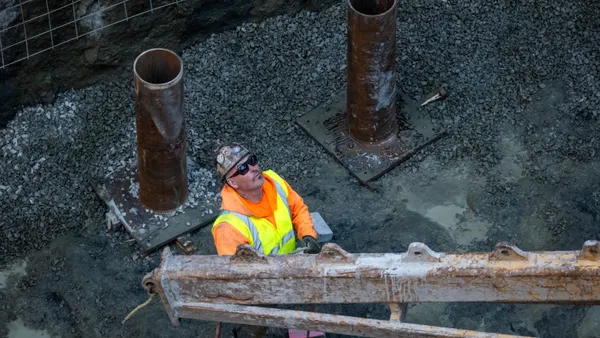Dive Brief:
-
The average U.S. apartment rent increased 0.3% from April to $1,316 in May, up 1.5% year-over-year and marking the lowest annual growth rate in three years, according to RentCafe.
-
Still, average rents slid in six of the country's 10 highest-priced markets, including San Francisco, Manhattan and Boston. For the fourth-straight month, San Francisco saw the highest rent decreases when compared to the year-ago period.
-
Of the country's 189 largest cities, rents rose in 76% of them in May, while rents stayed flat in 45 cities. Of the total 250 cities surveyed by RentCafe, 15 saw rents decrease.
Dive Insight:
Following a post-recession surge in multifamily construction, supply is beginning to surpass demand, especially at the high end of the rental market, effectively cooling prices in some of the nation's biggest cities. Downtown Los Angeles, for example, has added 7,551 new units since 2010, and the city's apartment inventory is now made up of 63% new units, according to RentCafe.
Nationwide, roughly one in 10 rental listings experienced a price cut from May 2016 to April 2017, with the national median rent sliding 2.9% during that time, according to Trulia. What's more, 83 of the nation's 100 largest metros saw price cuts increase from the year before. With the market set for a cycle high as more than 378,000 new apartments are expected to be completed this year — about 35% ahead of the 20-year average — rental price growth could continue to decelerate.
So far, multifamily activity is pacing ahead of predictions by Dodge Data & Analytics that starts in the category would drop 2% from 2016 to 435,000 starts in 2017. Recent figures from the Commerce Department show the category down 14.6% year-over-year in April at a rate of 328,000 starts.
According to RentCafe, while big markets are slowing down, smaller markets are heating up. Cities such as Colorado Springs, CO, and Buffalo, NY, are seeing rents pick up as more people move there for the lower housing costs and steady employment prospects. Colorado Springs recently cracked Realtor.com's list of the most active housing markets in May, while Buffalo is seeing a significant increase in millennials moving into the city.
Buffalo is among a growing group of cities across the country, particularly in the Midwest and Northeast, that are replacing their struggling industrial manufacturing economies with high-tech ones that are expected to contribute to population growth and spur housing demand.












